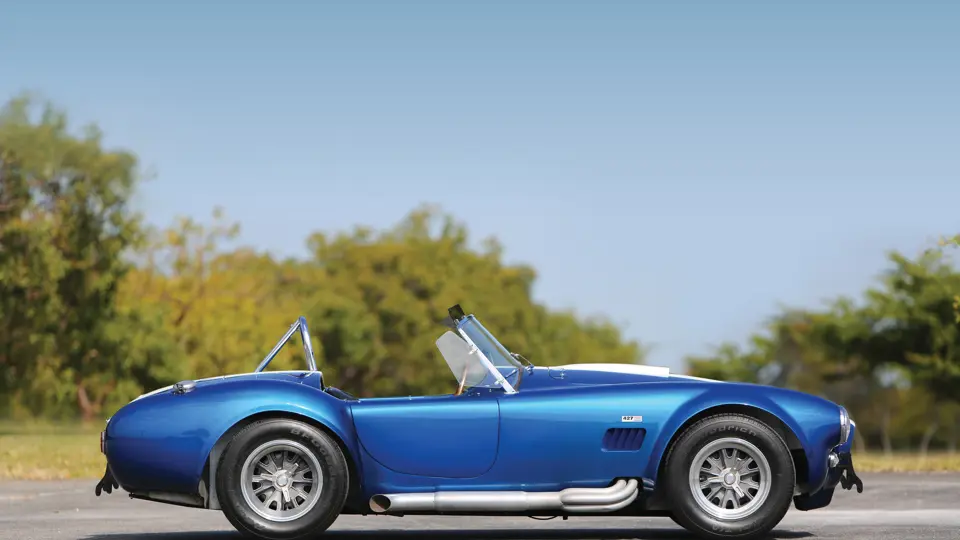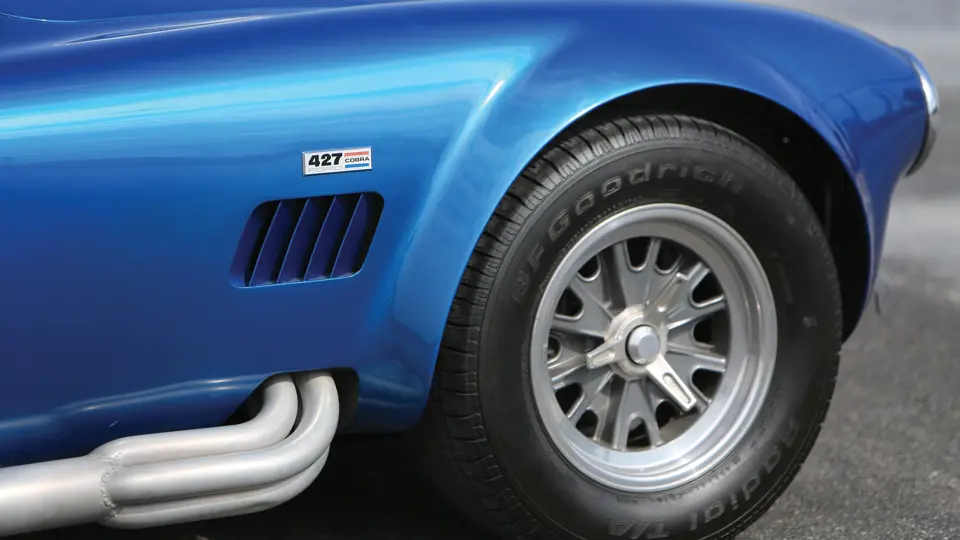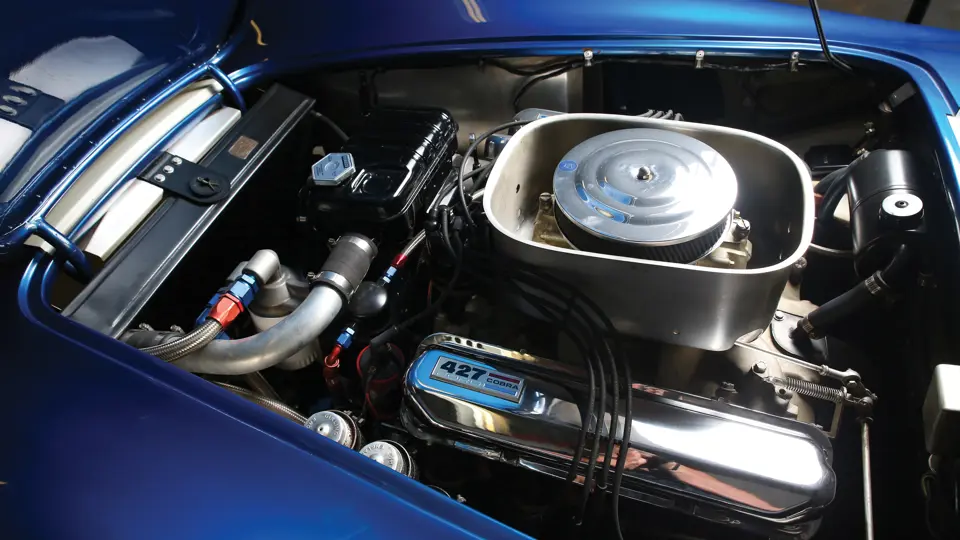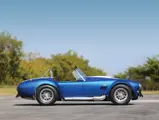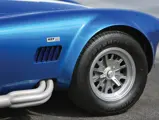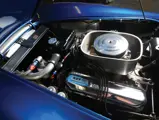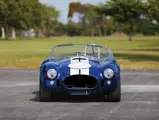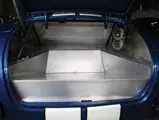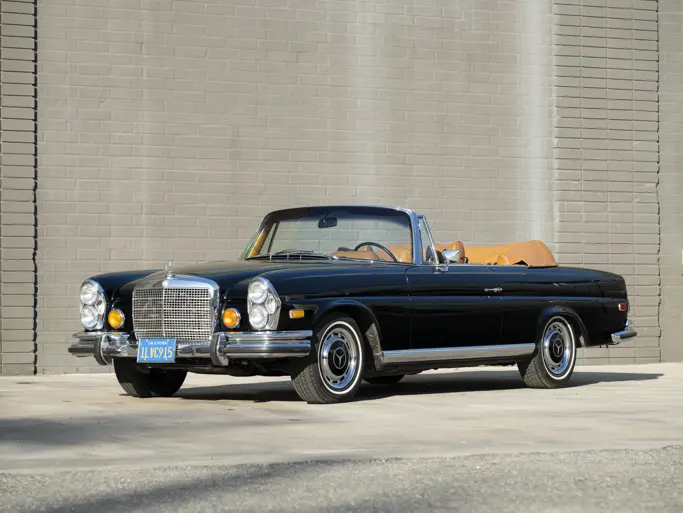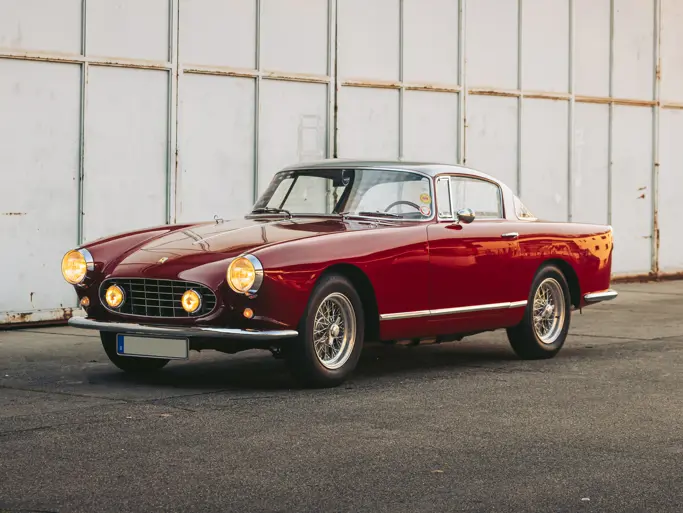Est. 485 hp, 427 cu. in. “medium-riser” OHV V-8 engine with a four-barrel Holley carburetor, four-speed manual transmission, four-wheel independent upper and lower A-arms with coil springs, Koni tubular shock absorbers, and anti-sway bars, and four-wheel Girling disc brakes with alloy calipers. Wheelbase: 90 in.
THE 427 S/C COBRA
Although Shelby’s 289 Cobra was well-proven in competition, by the mid-sixties it was becoming clear that something else was needed. Every year, more power was required to stay competitive, and Ford’s 289 had reached its reliability limit at around 380 or 390 horsepower.
In many respects, the father of the 427 Cobra was racing driver and development engineer Ken Miles, who thought the idea of a bigger engine might work for the Cobra, especially if winning in SCCA’s A Production class was the aim. If there was any doubt about the need, it was eliminated when the Shelby team went to Nassau for Speed Week in 1963, where they were confronted with Chevrolet’s new Corvette Grand Sport, which was more than nine seconds a lap faster than the Cobras.
Although Carroll Shelby had been promised a new aluminum-block version of Ford’s 390 engine, internal resistance developed from the NASCAR faction inside of Ford and Shelby, and they were forced to make do with the cast-iron 427. Although reliable at 500 horsepower, the engine was so much heavier that a complete redesign of the chassis was required to ensure that the car would handle properly. The result was a larger, five-inch wider chassis and coil springs all around. The necessary work was completed with the help of Ford’s engineering department, and the formidable 427 Cobra was born.
As with all his cars, Shelby intended to see that the Cobras were winners on the track. In order to qualify as a production car under FIA rules for the GT class, manufacturers were required to produce a minimum of 100 examples. Shelby’s strong relationship with privateer racers gave him the confidence that he could sell that many, and as a result, a competition-spec version of the new 427 was announced. Features on the car included an expanded body to accommodate wider wheels and tires, an oil cooler, a side exhaust, an external fuel filler, front jacking points, a roll bar, and a special 42-gallon fuel tank.
In anticipation of FIA approval, Shelby placed an order with AC for 100 competition 427 Cobras. Each was finished in primer with a black interior and air shipped to Shelby’s facilities upon completion. Unfortunately, when the FIA inspectors arrived on April 29, 1965, they found just 51 cars completed, and they denied Shelby the homologation he needed. Oddly enough, the same fate befell Enzo Ferrari; his 250 LM, which was intended to replace the GTO, was also denied approval. As a result, both of these archrivals were forced to return to the previous year’s cars for the upcoming season.
Once Shelby knew that the FIA was not going to allow the new 427 Cobra to compete in the GT class, he cancelled his order for the remaining competition cars and AC reverted back to the production of street cars.
Meanwhile, in June 1965, the FIA decided to juggle its classification system, and a new class, called “Competition GT,” was created. The production requirement for this class was lowered to 50, which was, coincidentally, one less than the number of 427 competition cars built at the time of the FIA inspection.
The rule change created another problem for Shelby: it put his Cobra in the same class as Ford’s GT40. Since Shelby was running that program for Ford, there was a clear conflict of interest, not to mention a disparity in performance. To resolve it, Shelby agreed not to campaign his own car, leaving it in the hands of the privateers.
By this time, 53 competition chassis had been completed by AC (chassis numbers CSX 3001 through CSX 3053), and of those, 16 had been sold to private teams. The first two were retained as prototypes, and one chassis, CSX 3027, was sent to Ford Engineering.
The remaining chassis were something of a problem for Shelby. They were parked outside of Shelby’s Los Angeles warehouse and proved difficult to sell. Seeing the cars prompted Shelby’s East Coast representative, Charles Beidler, to suggest that they be painted and completed as street cars and then marketed as the fastest street car ever built. The idea worked, and the 427 S/C, or Semi-Competition, was born.
The cars were brutally fast, and driving one was an exhilarating experience. One of the most memorable stories about the 427 Cobra is based on a test that was arranged for Sports Car Graphic magazine by Ken Miles. A few years earlier, Aston Martin had bragged that their racing cars were capable of accelerating from 0 to 100 mph and back to zero in less than 20 seconds. Miles had the idea to restage the test using the new 427 Cobra. The result, according to Sports Car Graphic’s editor Jerry Titus, was an astounding 13.2 seconds.
CSX 3045
Chassis CSX 3045 is a well-known and fully documented S/C, as it has been pictured three times in the Shelby American World Registry; first, in 1967, with early owner Peter Bayer on page 252; second, on page 251, which shows a nice on-track shot of the car (#288) with early 1980s owner Jere Clark at the wheel; and third, in the previous owner’s driveway, shortly after he took delivery in 1995.
The Cobra presented here was invoiced to Shelby American on February 23, 1965, and it was completed to S/C specification, under work order number 15103. On April 21, 1966, Shelby American received an order for an S/C model, and with it, a request was made to install a modified race exhaust system on the car, which was to be delivered to the customer, a Mr. Hall, on May 31st. Likely, “Mr. Hall” did not actually take delivery or keep the Cobra on its MSO, since the next recorded owner, Peter Bayer, acquired CSX 3045 as payment for promotional work done on behalf of dealer Larsen Ford, of White Plains, New York, and he was the first to register this car, in 1967. Doug Carsen, of Rimersburg, Pennsylvania, who is believed to have raced this particular S/C in several SCCA events, became the next owner.
In the mid-1970s, John Parlante, of Whitestone, New York, began some restoration work on the S/C prior to passing it to Geoff Howard in 1978. Once the car was acquired, Howard completed the work, including the Guardsman Blue paint scheme. By 1979, it was offered for sale with 10,400 miles and being described as “fresh restoration, all competition options, polished Halibrands—expensive!” Well-known historic and Cobra collector Jere Clark, of Phoenix, Arizona, bought the car, installed Arizona plate 427 S/C, and went vintage racing.
At SAAC-5 in Dearborn, Michigan, CSX 3045 won First Place in the Competition Shelby Popular Vote category, after which Dick Smith gave a white-knuckled Rick Kopec an on-track demo-drive at 185 mph! The car eventually came into the hands of Cobra aficionado George Stauffer, of Blue Mounds, Wisconsin, in the early 1980s. He advertised it as “a real S/C; it has run at Laguna Seca several times and is ready to win more historic races. Guardsman Blue; fuel cell; not for the timid.”
By 1986, it was in the ownership of Carl Schwartz, of Grand Blanc, Michigan, which was followed by inclusion in the famous John Mozart Collection from 1988 onward. Under Mr. Mozart’s ownership, CSX 3045 was subjected to a full restoration that had been carried out to his impeccably high standards. It was contracted to Mike Giddings, of Robin Automotive in Northern California, who refurbished the suspension, braking systems, rear end, and transmission, as well as performed all of the final assembly and detailing work. The original engine was rebuilt, the dynamometer was tested by Elgin Cams and Tech Craft, and the paint work was handled by Scott Veazie Restoration Services, of Los Angeles, California.
In December 1994, Cobra expert Dave Dralle, of Redondo Beach, California, carried out an inspection of the car on behalf of the next owner, who purchased it from Mr. Mozart in early 1995. This proved to be money well spent, as CSX 3045 won Gold at the 1998 SAAC Convention in Charlotte, North Carolina, plus Best Cobra and Best Comp Cobra at SAAC in Ann Arbor, Michigan, in 1999, in addition to many regional SAAC Show First Place awards.
Only 29 Shelby 427 Semi-Competition Cobras were built, and these raucous roadsters are seldom offered publicly. It is even more unusual to find a genuine, 18,000-mile S/C with this car’s perfect provenance and stunning appearance, thus providing a very tempting purchase consideration for a serious collector of American racing history.





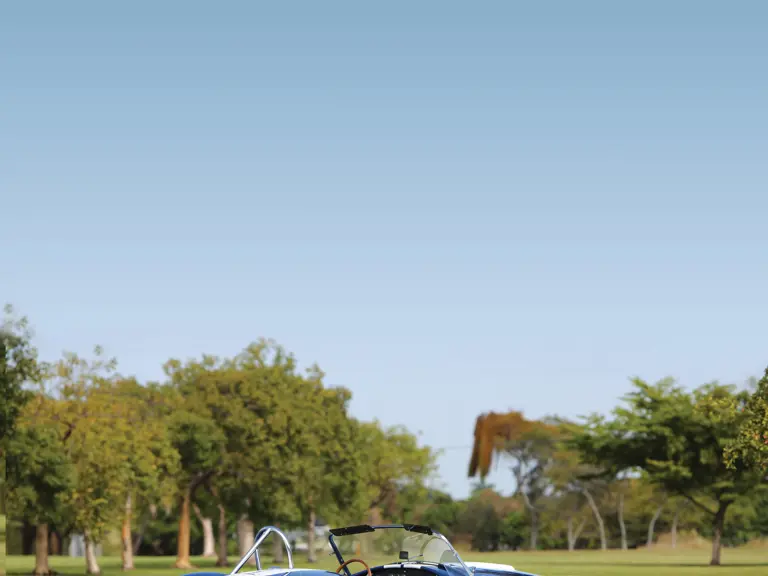
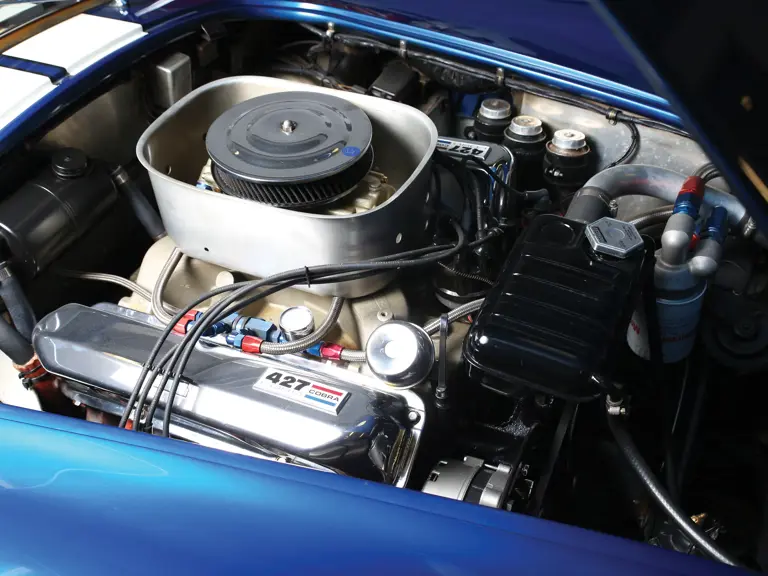

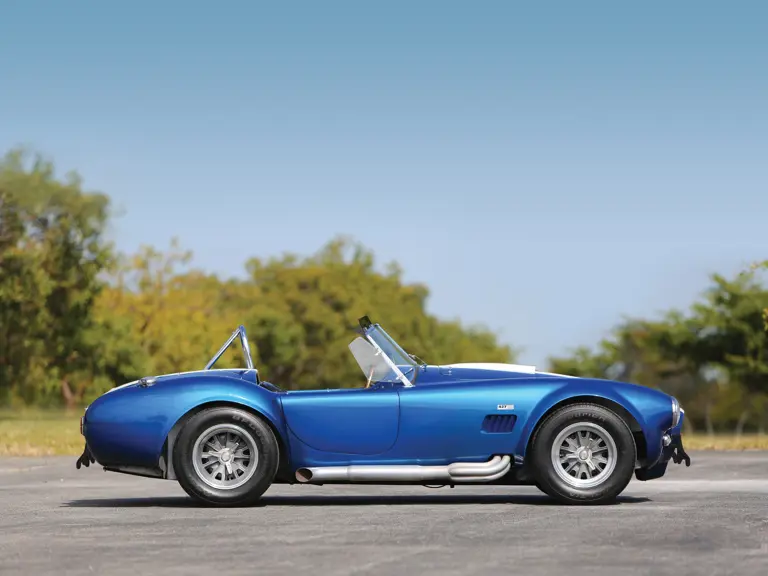
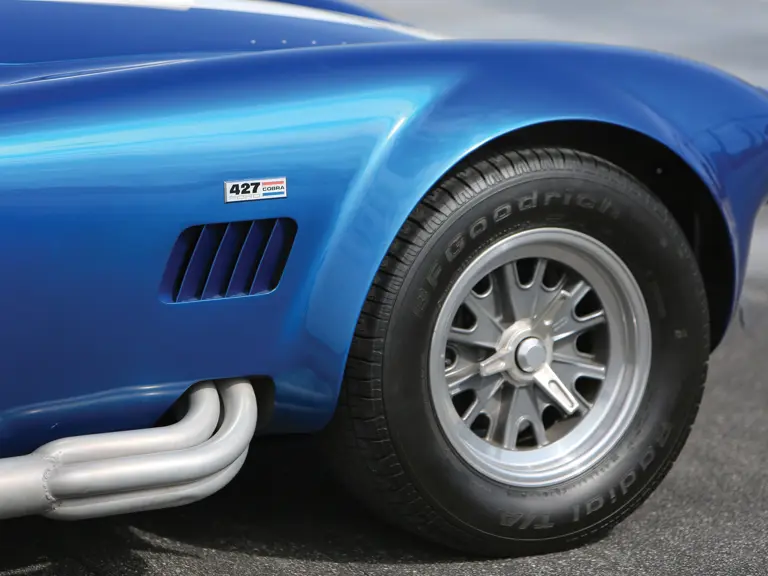
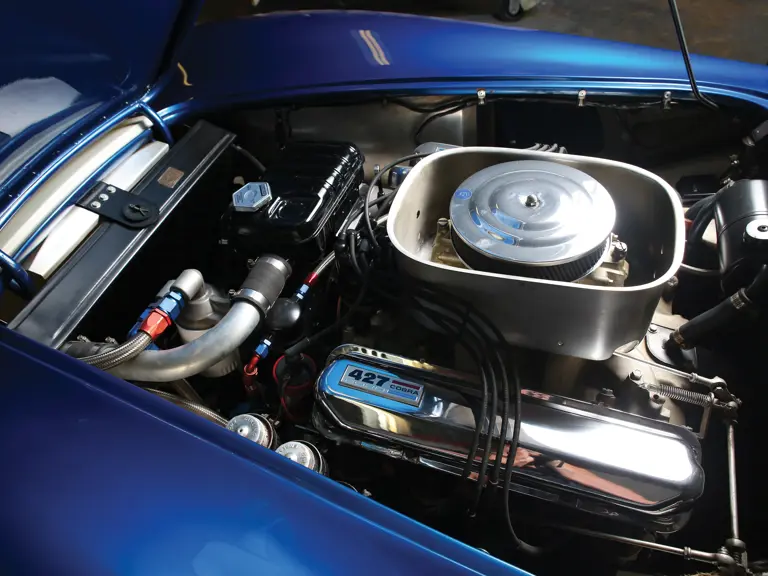


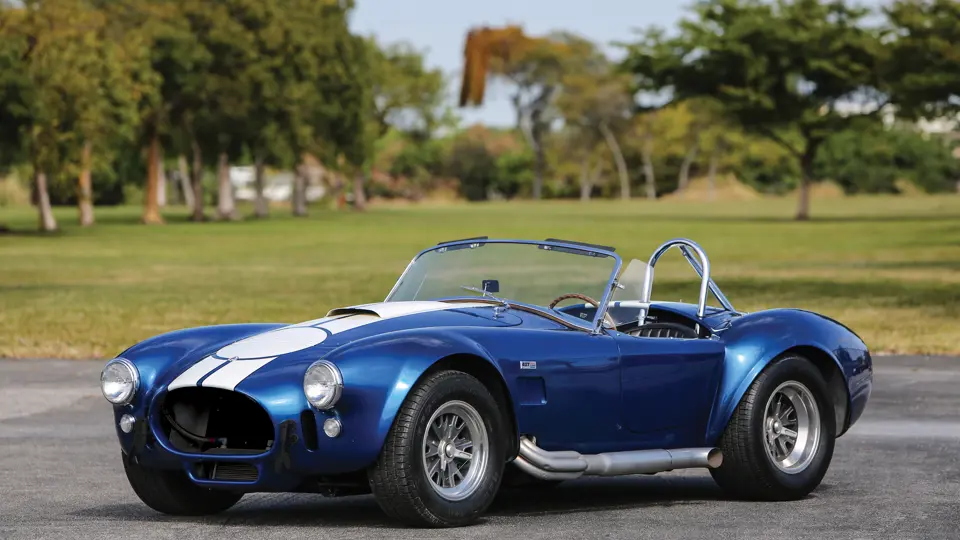
 | Amelia Island, Florida
| Amelia Island, Florida
